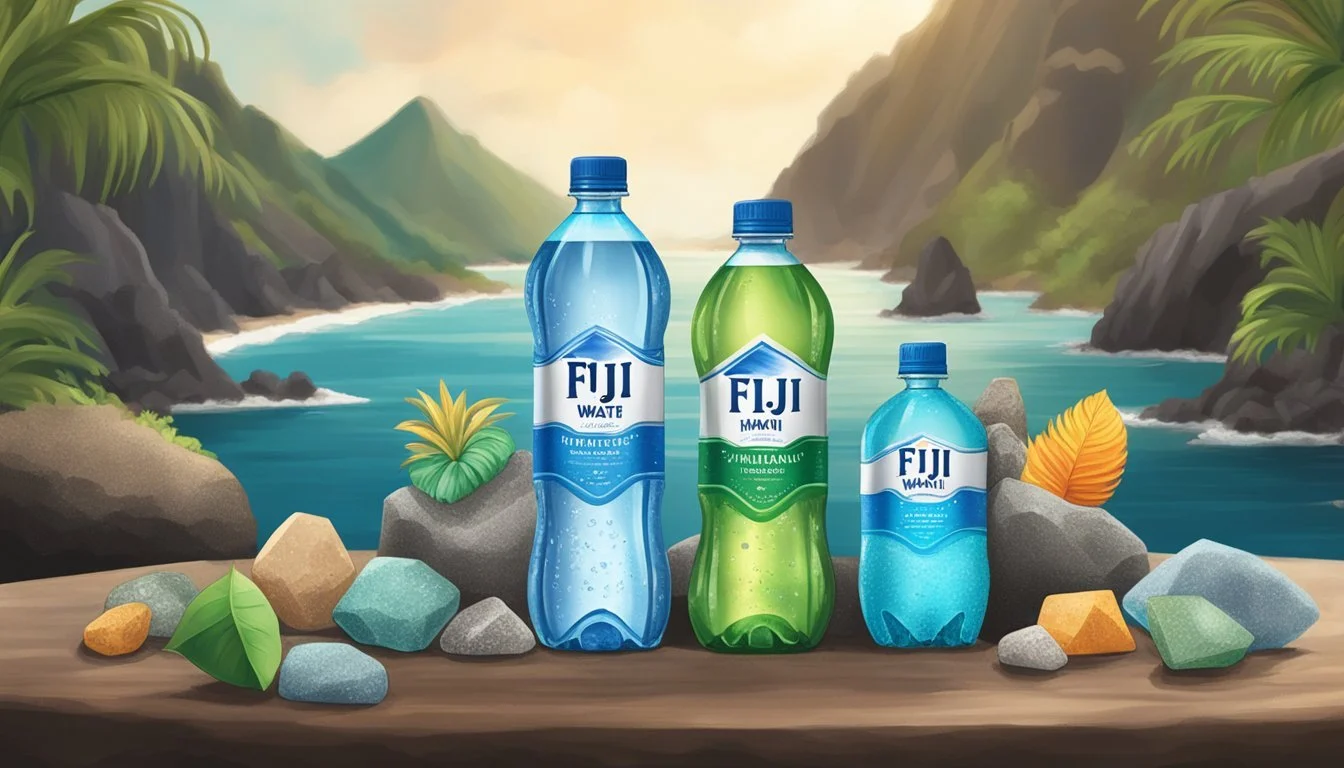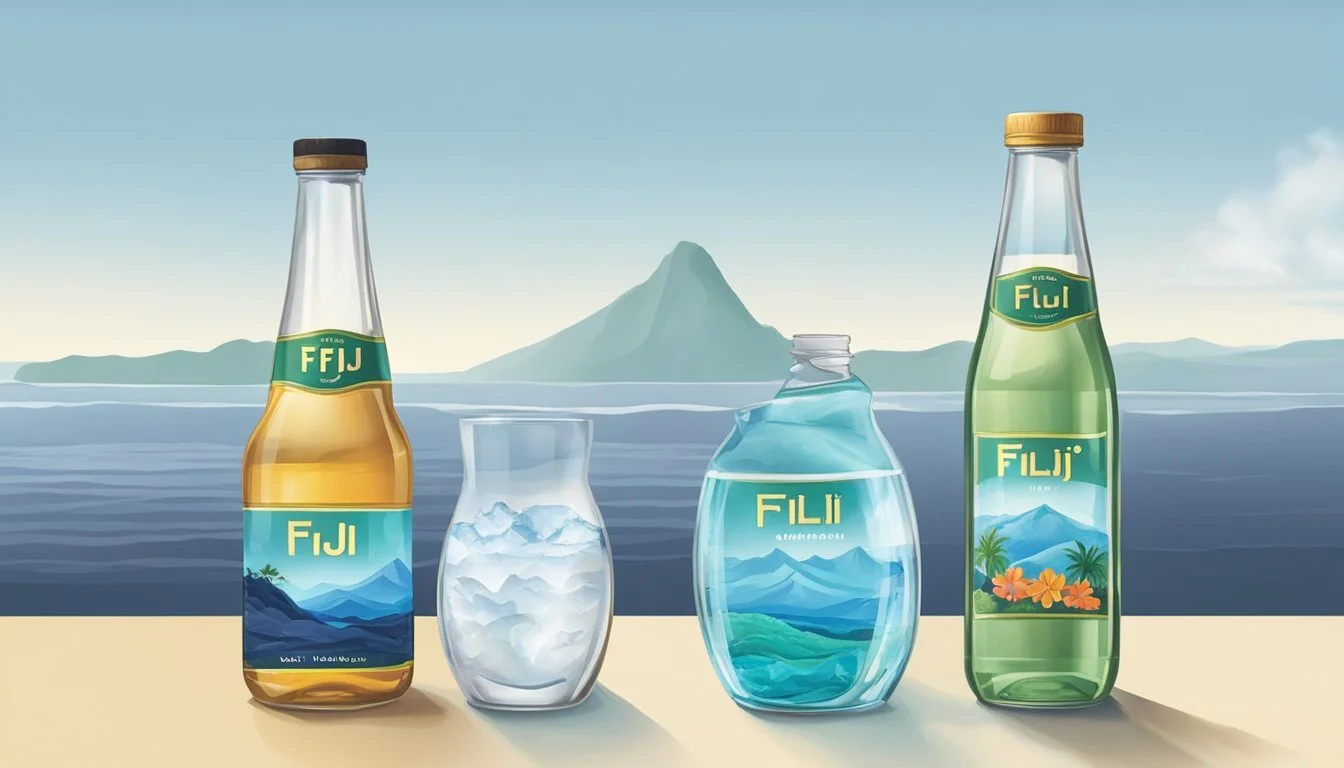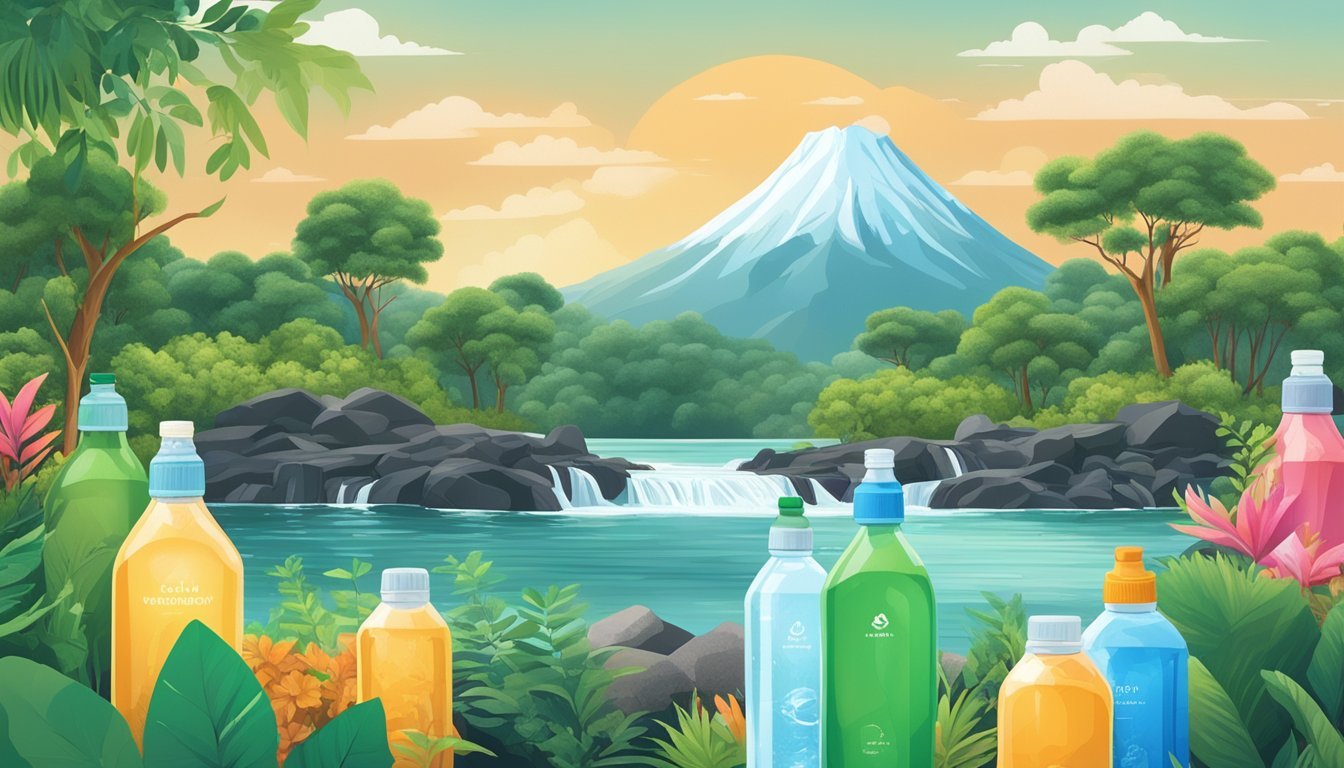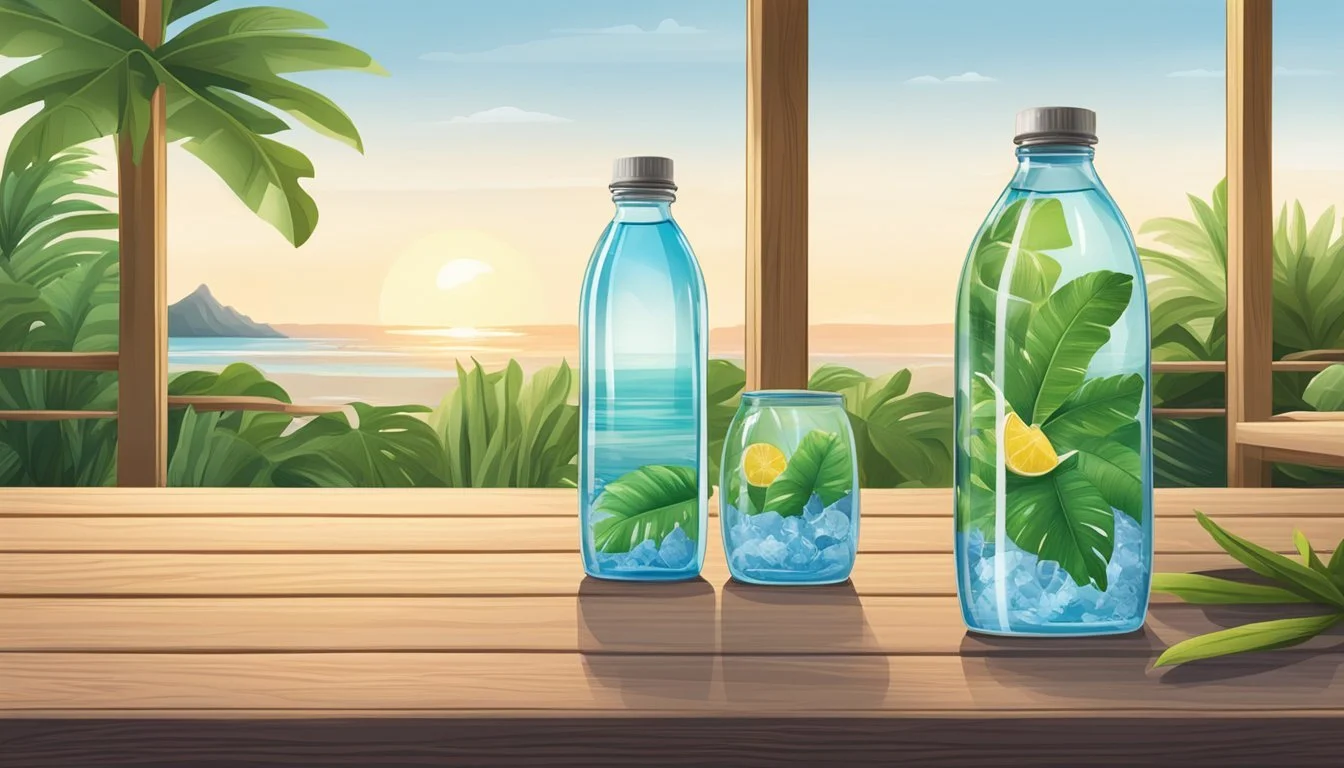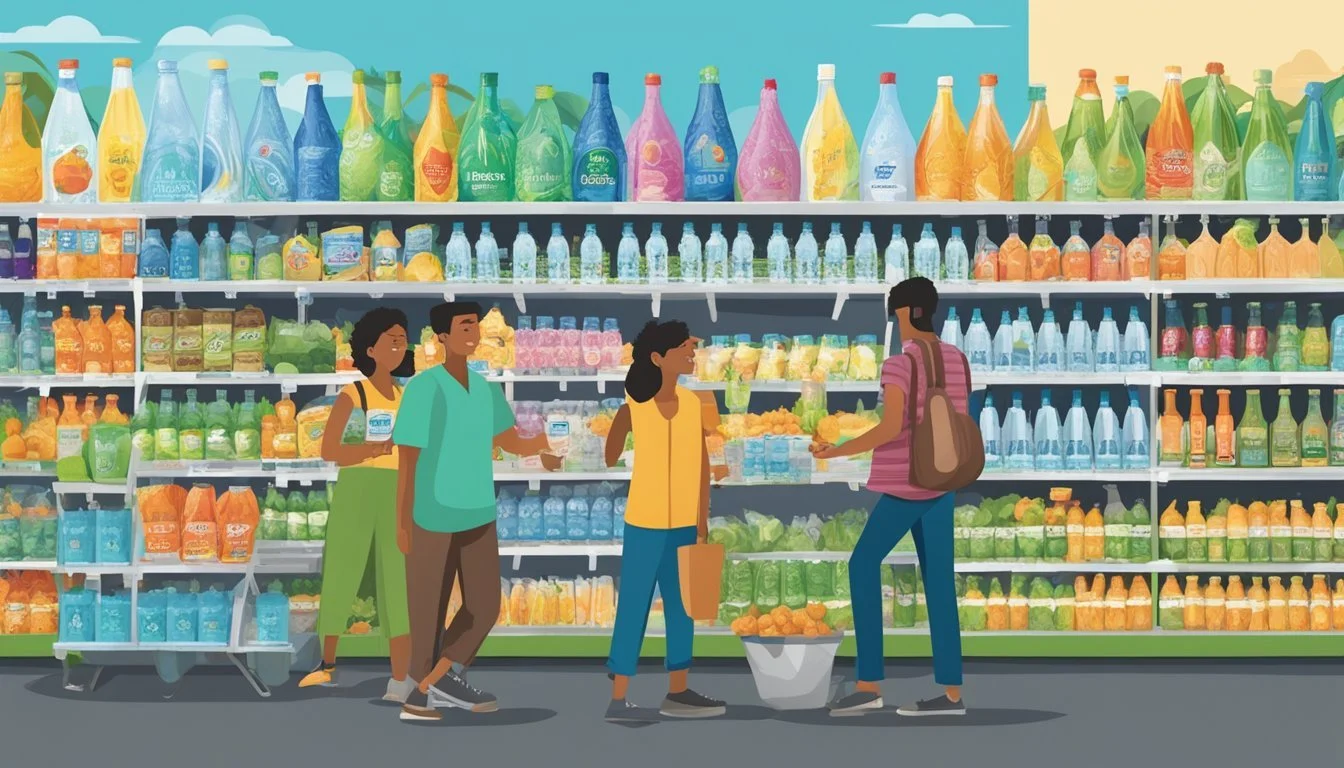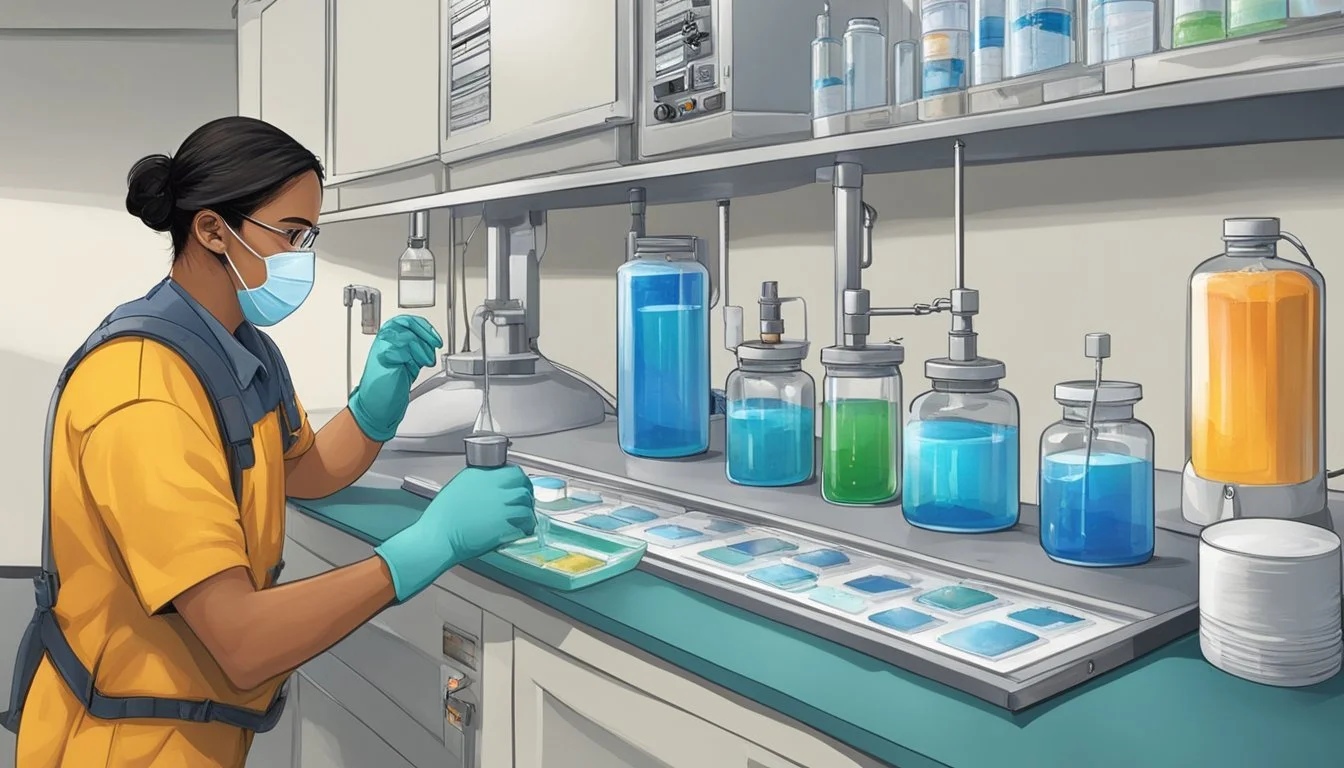Fiji vs. Hawai’i Volcanic
Comparing Premium Bottled Waters
Choosing between Fiji and Hawai’i Volcanic bottled water often brings up various factors for consumers who prioritize hydration and purity. Both brands are known for their distinct origins; Fiji Water comes from artesian aquifers in Fiji, while Hawai’i Volcanic is sourced from pristine volcanic springs in Hawaii. Understanding these sources can influence one's decision based on natural mineral contents and unique taste profiles.
Fiji Water is celebrated for its smooth taste and high silica content, which many believe offers extra hydration benefits. On the other hand, Hawai’i Volcanic emphasizes a natural filtration process through volcanic rock, which enriches the water with essential minerals. This can result in a clean, crisp taste that's compelling to those looking for a refreshing option.
The packaging and environmental impact also play a crucial role in selecting between these two brands. Fiji Water has faced criticism for its use of single-use plastic bottles, while Hawai’i Volcanic often markets itself as a more environmentally friendly choice. These factors are important to consider for consumers who are environmentally conscious.
Comparing the Sources
Fiji Water comes from an artesian aquifer located in the Yaqara Valley on the island of Viti Levu in Fiji. This aquifer is an underground chamber, naturally protected from external elements. The water is filtered through volcanic rock, which enhances its mineral content.
On the other hand, Hawaiian Volcanic Water, specifically Hawai’i Volcanic, originates from the Mauna Loa volcano in Hawaii, United States. The water is collected from rain that filters through porous volcanic rock. This natural filtration process adds a unique blend of minerals and electrolytes to the water.
Key Attributes
Attribute Fiji Water Hawai’i Volcanic Source Location Yaqara Valley, Viti Levu, Fiji Mauna Loa, Hawaii, United States Aquifer Type Artesian aquifer Collected rainwater through volcanic rock Natural Filtration Process Through volcanic rock Through volcanic rock Mineral Content Enhanced with minerals like silica Rich in electrolytes and minerals
Fiji Water is noted for its soft, smooth taste, which comes from its silica content. This mineral is absorbed as the water passes through layers of volcanic rock.
Hawai’i Volcanic distinguishes itself with a robust mineral profile, thanks to the volcanic rock filtration. The water is renowned for its unique blend of electrolytes that contribute to its crisp and refreshing taste.
In comparing these sources, both types of water benefit from natural filtration processes and volcanic rock. Yet, the locations and specific geological conditions of Fiji and Hawaii impart distinct qualities to the respective waters.
Chemical and Mineral Composition
Fiji Water and Hawai’i Volcanic both have distinct chemical and mineral compositions that influence their health benefits, flavors, and suitability for various dietary needs.
pH Levels and Health Implications
The pH level of water is crucial for health-conscious consumers.
Fiji Water has a pH level of around 7.7, making it mildly alkaline. Alkaline water is believed to help neutralize acid in the body and improve hydration.
Hawai’i Volcanic water boasts a naturally high alkaline pH of 8.8. This higher pH level adds to its appeal for those looking to support bodily functions by neutralizing acidity. The pH level can affect the taste and potentially influence the body's pH balance, although robust scientific evidence on the health benefits is still debated.
Major Minerals and Electrolytes
Both bottled waters contain important minerals and electrolytes that contribute to their health profile.
Fiji Water includes minerals such as calcium (17.9 mg/L), magnesium (14.7 mg/L), potassium (4.9 mg/L), and silica (93.4 mg/L).
Hawai’i Volcanic also contains essential minerals, including magnesium and calcium, which are critical for bone health, nerve function, and muscle performance. Sodium and potassium are vital electrolytes that help maintain a balance of fluids in the body. Exact values for Hawai’i Volcanic's mineral content may vary based on the specific volcanic source.
Trace Minerals and Daily Values
Though less abundant, trace minerals in bottled water can still offer health benefits.
Fiji Water contains several trace elements, such as silica, which is prominent in its profile at 93.4 mg/L. Silica is believed to support connective tissue and bone health.
Hawai’i Volcanic includes natural trace minerals from volcanic filtration, contributing elements like sodium and other micronutrients that may support overall wellness. While they might not meet the daily recommended intake on their own, these trace minerals can contribute to a balanced diet when combined with other food and drink sources.
Taste Profile and Preference
Fiji Water is known for its smooth and distinctive taste, often described as having a clean, crisp profile. Its unique mineral content, which includes silica, gives it a soft, almost velvety mouthfeel. Enthusiasts often mention the slight sweetness which results from its natural aquifer source.
Hawai’i Volcanic, on the other hand, offers a different experience. Drawn from volcanic sources, this water has a mineral-rich profile that provides an earthy yet refreshing taste. The higher pH level is said to enhance its smoothness, making it pleasant for regular drinking.
Comparing the two, Fiji Water tends to appeal to those who prefer a subtler, more familiar drinking experience. Hawai’i Volcanic's rich mineral taste may attract those looking for something different or who have a palate attuned to more complex profiles.
Taste Comparison Table
Attribute Fiji Water Hawai’i Volcanic Source Natural Artesian Aquifer Volcanic Sources pH Level 7.7 8.0 - 8.5 Mineral Content Silica, Magnesium, Calcium Rich in Minerals Taste Profile Smooth, Slightly Sweet Earthy, Smooth Preferred By Those preferring mild taste Enthusiasts of complex taste
In taste tests, both waters have their dedicated followers. Fiji's smoothness and sweetness are often praised, while Hawai’i Volcanic receives accolades for its mineral complexity and refreshing finish.
This diversity in taste profile means choosing between them comes down to personal preference.
Environmental Impacts and Sustainability
Understanding the impact of bottled water on the environment involves examining packaging choices, source sustainability, and the carbon footprint of various brands. These factors play a crucial role in determining the overall environmental impact.
Packaging Choices and Recycling
Bottled water brands typically use PET, glass, or aluminum for their packaging. PET plastic bottles are popular due to their lightweight and durability. Single-use plastic bottles, however, contribute significantly to pollution. In contrast, glass bottles, while recyclable, are heavier and require more energy to transport.
Aluminum packaging is emerging as a sustainable alternative since aluminum is infinitely recyclable and lighter than glass. Brands like Hawai’i Volcanic and Fiji must consider these factors when choosing packaging materials.
Recycling rates are also crucial. Higher recycling rates improve sustainability but depend heavily on consumer participation and local recycling facilities. Reducing single-use plastics and promoting reusable or recyclable containers are effective strategies for minimizing environmental impacts.
Source Protection and Renewability
The source of water is vital for sustainability. Fiji Water is sourced from an artesian aquifer in a remote part of Fiji. Artesian aquifers are protected underground reserves, and while they are replenishable, they need careful management to avoid over-extraction. Hawai’i Volcanic sources its water from a volcanic spring, emphasizing the use of natural spring water.
Protecting these sources is essential. Both brands must ensure that their water sources are well-maintained and regenerated through natural processes like rain. They also need to engage in practices that protect the surrounding ecosystems and prevent contamination.
Sustainable water use includes not only protecting the water source but also the land it comes from. Ensuring that the environment around the source remains undisturbed is critical for long-term viability.
Carbon Footprint of Water Brands
The carbon footprint reflects the greenhouse gases emitted during the lifecycle of bottled water, from extraction to distribution. Fiji Water aims to be carbon negative, meaning it offsets more emissions than it produces. Achieving this requires extensive measures like carbon offset programs and efficient logistics.
Transporting water from remote locations like Fiji can increase the carbon footprint due to long shipping distances. Hawai’i Volcanic, depending on its distribution network, may have a different footprint. Local sourcing and shorter transport routes significantly reduce emissions.
Implementing renewable energy in production and logistics, as well as using low-emission vehicles, can further help in mitigating the carbon footprint. Consumers are increasingly aware of these factors, influencing their purchasing decisions towards more eco-friendly brands.
Health Benefits and Hydration Efficacy
Fiji Water and Hawai’i Volcanic are both marketed as premium bottled waters, each claiming unique health benefits.
Hydration is a key advantage of both brands. Drinking adequate water is essential for functions like regulating body temperature, supporting digestion, and maintaining kidney health. Both Fiji Water and Hawai’i Volcanic effectively support these physiological needs.
Fiji Water
Fiji Water is sourced from natural artesian wells in Fiji and contains silica, calcium, and magnesium. These minerals can support bone health, nerve function, and skin health.
Silica content in Fiji Water is notable. Silica may promote skin health by supporting collagen production.
Hawai’i Volcanic
Hawai’i Volcanic is sourced from Hawaiian volcanic springs. It boasts a range of minerals and electrolytes, including potassium, magnesium, and calcium. These elements are essential for maintaining electrolyte balance, which is crucial for muscle function and preventing dehydration.
Comparison Table
Feature Fiji Water Hawai’i Volcanic Source Artesian wells in Fiji Hawaiian volcanic springs Key Minerals Silica, Calcium, Magnesium Potassium, Magnesium, Calcium Electrolytes Moderate High Health Benefits Skin, Bone, Nerve Health Muscle Function, Hydration
In terms of hydration efficacy, both brands excel due to their high-quality sources and mineral content. The choice between the two may ultimately come down to personal preference and specific health needs.
Comparison of Bottling Practices
Both Fiji and Hawai’i Volcanic have distinct bottling practices that emphasize purity and sustainability.
Filtration Process:
Fiji Water uses an extensive filtration process that includes natural artesian pressure pushing the water through layers of porous volcanic rock. This ensures mineral retention.
Hawai’i Volcanic also employs a meticulous filtration method. Their water undergoes multi-stage filtration which includes removing impurities while maintaining essential minerals.
Reverse Osmosis:
Fiji bottles its water directly from the source without reverse osmosis. This helps retain the natural composition.
Conversely, Hawai’i Volcanic often incorporates reverse osmosis to further purify its water, ensuring the removal of any potential contaminants.
Ionization:
Hawai’i Volcanic includes an ionization step that enhances the alkalinity of the water. This process is targeted at offering a higher pH balance, which some consumers find beneficial.
Fiji Water does not use ionization, relying on the natural profile of its artesian source.
Distillation Process:
Neither Fiji nor Hawai’i Volcanic primarily utilizes distillation, as both brands market their water based on natural filtration and purity from the source. Distillation would strip away natural minerals, which are part of the appeal for both brands.
Both brands focus on maintaining the integrity and natural quality of the water through their unique bottling practices.
Packaging:
Fiji Water uses PET (Polyethylene Terephthalate) bottles, which are recyclable and widely used.
Hawai’i Volcanic opts for eco-friendly options, including glass and 100% recycled PET. This attention to sustainability differentiates it from many competitors in the bottling industry.
Market Presence and Consumer Choice
Examining market presence and consumer choice sheds light on the dominant bottled water brands and the factors that drive consumer preferences in this sector.
Brand Reputation and Net Favorability
Fiji Water has established itself as a premium choice among bottled water brands. According to a Morning Consult survey, Fiji Water held the highest net favorability rating among U.S. adults, reflecting its strong consumer approval.
Fiji's marketing highlights its unique sourcing from a remote aquifer in Fiji, contributing to its perceived purity and exclusivity.
Hawai'i Volcanic also emphasizes its pristine source, pulled from volcanic rocks in Hawai'i. This unique brand reputation appeals to eco-conscious consumers due to its environmental commitment, though it has not yet achieved the same level of widespread recognition as Fiji Water.
Product Availability and Cost Factors
Fiji Water's extensive distribution and market reach make it easily accessible in both retail and online stores. It is available in various sizes, catering to different consumer needs. The cost of Fiji Water typically ranges from $2.00 to $2.50 for a 500ml bottle, positioning it as a premium product.
Hawai'i Volcanic, while gaining traction, is less readily available compared to Fiji Water. Its distribution is currently more limited to specialized health stores and select online platforms. Pricing for Hawai'i Volcanic is generally within a similar range to Fiji Water, reflecting its premium positioning.
In summary, while both brands boast unique selling points related to their sourcing and brand values, their market presence and consumer accessibility significantly differ.
Safety, Contaminants, and Purity Testing
Ensuring safety and purity in bottled water involves stringent testing and filtration processes to remove contaminants.
Fiji Water undergoes a multi-step process, including natural filtration through volcanic rock. This process removes heavy metals and other impurities, resulting in high-quality water.
Hawai’i Volcanic also emphasizes purity, using natural volcanic filtration. This method effectively eliminates pollutants and heavy metals.
Both brands prioritize safety, with routine purity testing. Independent labs test for contaminants, including microplastics, which can be present even in top brands.
Fiji Water's purity testing includes checks for arsenic, lead, and other harmful substances. The results often show minimal to no contaminants.
Hawai’i Volcanic similarly boasts rigorous testing, ensuring the absence of hazardous impurities and maintaining high standards of water quality.
Comparison of Contaminant Levels
Brand Microplastics Heavy Metals Pollutants Fiji Water Low Negligible Minimal Hawai’i Volcanic Low Negligible Minimal
Tap water can contain various contaminants depending on the source and treatment methods. Bottled water brands like Fiji and Hawai’i Volcanic offer additional layers of filtration.
Both brands ensure the purity of their product through advanced filtration methods. This results in bottled water that is safer and cleaner than many tap water options.
By comparing Fiji Water and Hawai’i Volcanic in terms of safety, contaminants, and purity testing, it is evident that both uphold high standards.
More About Fiji
Fiji vs Mountain Valley Spring Water: Which Bottled Water is Better?
Fiji vs Whole Foods Italian Still Mineral water: Which Bottled Water is Better?
More About Hawai’i Volcanic
Acqua Pana vs Hawaii Volcanic: Which Bottled Water is Better?
Antipodes vs Hawaii Volcanic: Which Bottled Water is Better?
Aqua Carpatica vs Hawaii Volcanic: Which Bottled Water is Better?
Arrowhead vs Hawaii Volcanic: Which Bottled Water is Better?
Boxed Water vs Hawaii Volcanic: Which Bottled Water is Better?
Castle Rock vs Hawaii Volcanic: Which Bottled Water is Better?
Core Hydration vs Hawaii Volcanic: Which Bottled Water is Better?
Deer Park vs Hawaii Volcanic: Which Bottled Water is Better?
Hawaii Volcanic vs 1907water: Which Bottled Water is Better?
Hawaii Volcanic vs Alkaline88: Which Bottled Water is Better?
Hawaii Volcanic vs Big Chill: Which Bottled Water is Better?
Hawaii Volcanic vs BodyArmor: Which Bottled Water is Better?
Hawaii Volcanic vs Cascade Mountain: Which Bottled Water is Better?
Hawaii Volcanic vs CBD Living: Which Bottled Water is Better?
Hawaii Volcanic vs Crystal Geyser: Which Bottled Water is Better?
Hawaii Volcanic vs Crystal Lake: Which Bottled Water is Better?
Hawaii Volcanic vs Essence pH10: Which Bottled Water is Better?
Hawaii Volcanic vs Kirkland Signature: Which Bottled Water is Better?
Hawaii Volcanic vs Liquid Death: Which Bottled Water is Better?
Hawaii Volcanic vs Open Water: Which Bottled Water is Better?
Hawaii Volcanic vs Proud Source: Which Bottled Water is Better?
Hawaii Volcanic vs Pure Life: Which Bottled Water is Better?
Hawaii Volcanic vs Purely Sedona: Which Bottled Water is Better?
Hawaii Volcanic vs Richard's Rainwater: Which Bottled Water is Better?
Hawaii Volcanic vs Simple Truth: Which Bottled Water is Better?
Hawaii Volcanic vs Talking Rain AQA: Which Bottled Water is Better?
Hawaii Volcanic vs Weird Water: Which Bottled Water is Better?
Hawaii Volcanic vs Whole Foods 365: Which Bottled Water is Better?
Hawaii Volcanic vs Whole Foods Italian Still Mineral water: Which Bottled Water is Better?
Hawaiian Springs vs Hawaii Volcanic: Which Bottled Water is Better?
Ice Mountain vs Hawaii Volcanic: Which Bottled Water is Better?
Icelandic Glacial vs Hawaii Volcanic: Which Bottled Water is Better?
Just Water vs Hawaii Volcanic: Which Bottled Water is Better?
Mountain Valley Spring Water vs Hawaii Volcanic: Which Bottled Water is Better?
Nestle Pure Life vs Hawaii Volcanic: Which Bottled Water is Better?
Poland Spring vs Hawaii Volcanic: Which Bottled Water is Better?
San Pellegrino vs Hawaii Volcanic: Which Bottled Water is Better?
Smartwater vs Hawaii Volcanic: Which Bottled Water is Better?
Solan de Cabras vs Hawaii Volcanic: Which Bottled Water is Better?
Topo Chico vs Hawaii Volcanic: Which Bottled Water is Better?
Zephyrhills vs Hawaii Volcanic: Which Bottled Water is Better?



